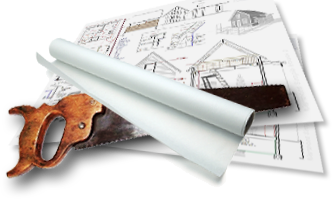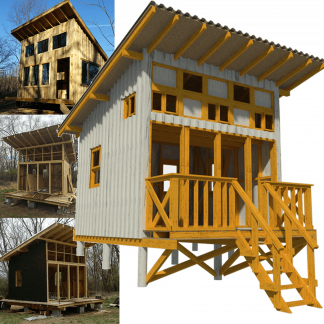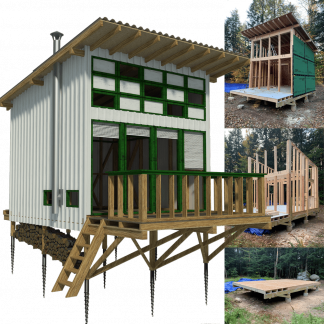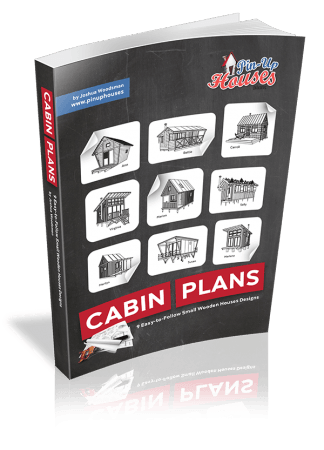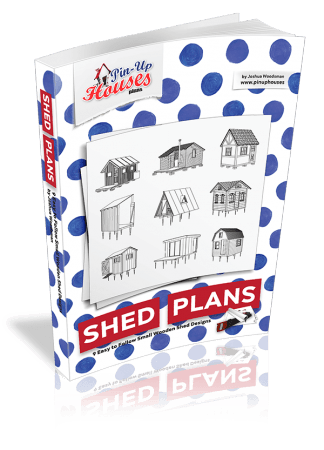The seven most effective solutions are portable delivery to the door, on-site storage at home, off-site indoor facility storage, long-distance shipping to major metros, business storage, renovation and staging storage, and a flexible plan where customers only pay for the storage actually used, all built around one simple container process that reduces stress and saves space in real life. These Big Box Storage Solutions let households and businesses stack smarter, time moves better, and access belongings on clear schedules that fit changing plans in 2025.
Near the start of any project, using Big Box’s portable units to load at a steady pace allows better organisation, safer handling, and fewer re-packs, because the container arrives, sits where it is needed, and is later stored at a secure facility or shipped when ready. Each container measures 8′×5′×7′ (exterior), which encourages tight, efficient packing per room so space is used well and transport is simpler. The company also promotes “Only Pay for the Storage You Use,” which means ordering extra containers carries no penalty if fewer are needed, helping prevent waste while staying flexible.
1) Big Box Storage Solutions: portable delivery that comes to the door
Big Box brings the container to the address, sets it down where it fits, and lets customers load at their own pace, which is often the easiest way to start maximising space without renting a truck or racing the clock. This model complements secure self-storage options because the same unit can remain on-site for quick access or be picked up for safe, indoor storage with controlled access hours at local facilities. By handling only one load, households cut repeat lifting and reduce damage risk, which preserves both time and space during busy weeks.
How it works in plain steps
- Get it: Big Box delivers one or more containers to the home or business so packing can begin on a set date that fits the schedule.
- Load it: Fill the unit over a day or several days, using the full height and length for maximum space savings inside the box.
- Keep it or store it: Leave the unit on-site or send it to Big Box’s secure facility when loading is done so the driveway clears and the project moves forward.
2) Keep it on-site: flexible space at home
Keeping the container on the driveway or in a suitable spot at the property turns it into extra square footage during a move, remodel, or seasonal reset, which adds breathing room without weekly trips to a storage building. This approach pairs well with secure self-storage options because the unit is lockable, and if plans change, Big Box can retrieve it for off-site storage without reloading anything. On-site access also reduces clutter inside, making it easier to stage rooms and use vertical space in the container rather than filling hallways and closets.
Space-maximising tips for on-site use
- Stack boxes to the ceiling, place large items first, and fill gaps with soft goods so every inch counts inside the container.
- Distribute weight evenly from side to side and secure each “tier” with straps or rope to prevent shifts during movement or pickup.
3) Store it off-site: secure indoor storage with access
When the container is full, Big Box can pick it up and hold it at a secure local facility, which protects belongings and clears the driveway, all with access available seven days a week at the facility itself. For those comparing secure self-storage options, this indoor approach keeps items in the same locked unit that was loaded at home, reducing handling and confusion during longer projects. Off-site storage also helps with timeline changes, because the container can sit safely until keys, permits, or schedules line up.
Smart packing for off-site storage
- Create stable “walls” of items and strap each wall before building the next to keep the load tight during transport and warehouse handling.
- Avoid storing perishables or plants in the container, and label fragile boxes clearly for safer stacking and faster retrieval later.
4) Long-distance shipping to major metros
If the project turns into a move outside San Diego, Big Box can ship the loaded container to the destination city and include 30 days of free storage to make timelines easier to manage. Shipments go to affiliate locations across more than 18,000 metropolitan areas in the U.S., with options to unload at a secure facility or arrange final-mile delivery with licensed, insured movers. The FAQ also notes support for long-distance moves across the U.S., with guidance available for special routes like Alaska and Hawaii when needed.
Why shipping maximises space
- One load, end-to-end: pack once at home, then unpack at the destination without transferring items into new trucks or units.
- Extra time buffer: 30 days of included storage lets customers start early and finish after arrival, reducing last-minute clutter and stress.
5) Business storage built on the same Big Box Storage Solutions model
Big Box’s process applies to homes and businesses alike, which makes it a good fit for inventory, records, fixtures, and seasonal equipment that need short-term space without a costly lease. A business can stage a container at its site during busy months, then send it to the facility for secure storage once the rush is over, keeping space clear for staff and customers. With the standard 8′×5′×7′ unit and the option to order multiple boxes, teams can right-size capacity from project to project.
Micro-use cases that save time
- Retail: Rotate seasonal inventory into the unit for quick swaps and send it off-site between campaigns to free up the back room.
- Contractors: Store tools and materials on-site during a remodel, then move the loaded unit off-site at the end of the phase to reset the jobsite.
6) Renovation and staging without clutter
Remodels run smoother when furniture and boxes move out of work zones, and a portable unit is a simple way to declutter rooms so crews have space to work and materials stay clean and safe. Decluttering before packing is an industry best practice because it protects fragile items and makes stacking easier, which helps the box hold more and ride safer. Placing heavy items on the bottom, stacking to the ceiling, and securing tiers with straps are proven steps that protect both space and belongings during a project timeline.
Staging tips that create space
- Load large pieces first against the walls, then stack lighter boxes up high to use vertical space and keep traffic lanes open inside the home.
- Fill gaps with pillows and linens, and leave essentials near the door so they come out first when it is time to reset a room.
7) Pay only for the storage used
Big Box’s policy to only charge for the containers actually used reduces overbuying and makes it safe to order an extra box “just in case,” which is rare among storage choices. This is a direct way to maximise space and budget because the plan adapts to real item counts and changing timelines without penalties for unused capacity. Combined with a straightforward local round-trip delivery fee and occasional free initial delivery for longer commitments, the pricing structure is both simple and flexible.
Quick numbers that matter in 2025
- Each container: exterior dimensions 8′×5′×7′, suited for about a room’s contents when carefully packed.
- Local basics: within the standard San Diego area, empty drop-off and later pickup of a full unit is a $99 round-trip, with free initial delivery for new customers committing to 4+ months in the standard area.
Pro tips to maximise every Big Box inch
- Secure each load section with straps or rope before building the next to keep walls from shifting and crushing lighter boxes.
- Evenly distribute weight left-to-right and front-to-back so the container rides level during pickup, transit, and placement at the facility.
- Protect furniture with pads and avoid perishable items, which keeps the load tight, clean, and ready for longer storage windows.
Security and access: simple, safe, and clear
Big Box’s promise includes secure indoor storage at local facilities and customer-controlled locks on the containers, keeping access limited to the authorised key holders. Access is available seven days a week at the facilities, which helps households and businesses retrieve items on their schedule without interrupting work or family time. For extra peace of mind, using high-quality locks and keeping an inventory list further strengthens at-the-door and in-facility security practices.
A simple case snapshot: condo to house, zero chaos
A San Diego couple ordered two containers, packed each by room over three evenings, and had Big Box pick them up for secure storage before closing day, which prevented hallway clutter and last-minute rushes. Because each unit fits roughly a room’s contents when packed well, the couple used vertical space and straps to hold tight walls, which made the final unload easy and quick. When the new keys were ready, the company delivered both units, and the family unpacked in stages, keeping the garage open and the living areas clear from day one.
Why these Big Box Storage Solutions work now
The process is built around convenience and control: delivery, self-paced loading, and either on-site access, off-site storage, or shipping when needed, which suits today’s shifting timelines. Clear pricing and the “only pay for what you use” policy support smart budgeting while removing stress about ordering too much space at the outset. Adding seven-day facility access and long-distance coverage to major metros elevates Big Box beyond a simple storage drop-off and turns it into a complete plan for 2025.
Final thoughts
To maximise space in 2025, start with portable delivery, choose on-site or off-site storage based on access needs, and keep the option to ship long distance in the same locked unit, which protects time, budget, and belongings from start to finish. Pair these steps with careful packing and simple safeguards like straps, labels, and good locks to turn portable storage into a clean, organised system rather than a pile of boxes, all while keeping choices open with secure self-storage options as plans evolve. With Big Box’s flexible model and pay-for-what-you-use approach, households and businesses gain control over space without giving up convenience or security.

